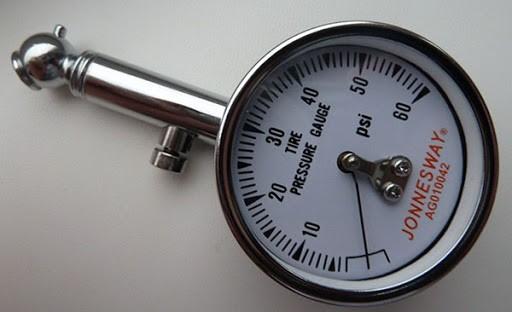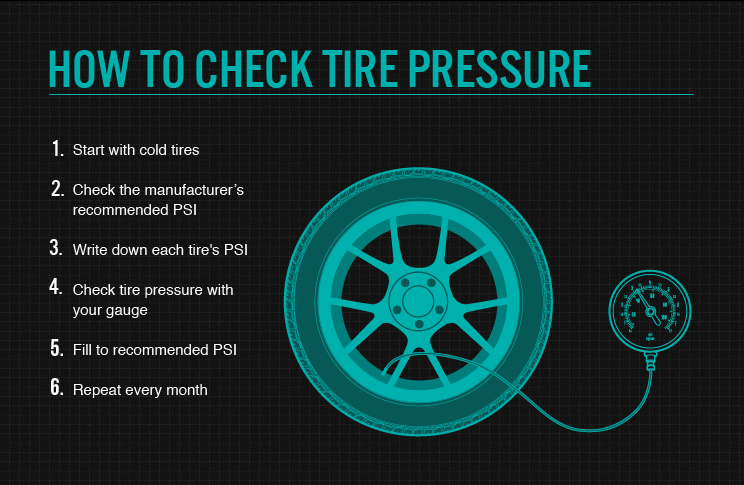2021-07-30 | Bridgestone Team
GUIDANE FOR PROPERLY INFLATING CAR TIRES FOR THE NEW DRIVERS
Inflating car tires is probably familiar with those who have been driving for a long time, but not every driver or car owners know how to do it properly, how to prolong tire life and keep their car in a good condition. So, let's find out these following experiences of inflating car tires for the new drivers in all times and situations.
1. Why should you pay attention to inflating car tires?
Safety and driving speed are affected by tire inflation and the more or less air. Therefore, we need to pay attention to every small detail from production to installation and maintenance of tires that make sure they do their job of keeping the air inside.
2. Misunderstandings about inflating cars:
Inflate tires as much as possible: This is the most common misunderstanding when inflating car tires. The new drivers often think that the more inflated the tires, the smoother and faster the car. However, the friction and contact with the road surface is too little, making the wheels easy to slip when having obstacles or hitting hard on potholes or bad roads. In the hot weather, the temperature of road surface increases, the over-inflated tires with high pressure can cause explosion.
Do not over-inflate the maximum pressure: The maximum pressure level is the number that ensures the best vehicle and safest tire, does not mean that the pressure level could not be higher. When the tires are new or well maintained, it is possible to inflate the tires beyond this number, but the new drivers should apply the recommended optimum pressure level to prolong the tire life.
Tire pressure can be checked manually: The drivers usually check the tire pressure by hand. However, the force when tapping or pressing the tire is often uneven and the subjective perception is not always accurate, which can cause the drivers to misjudge the tire condition. To know if the tires are too inflated or under-inflated and need to be inflated, you need to use a specialized tire pressure gauge. This is an essential and multi-use tool that every new driver should have.

A specialized tire pressure gauge
3. What to pay attention to inflating car tires?
Pressure is simply understood as the density of air inside a car tire. When the tire is over-inflated, the tire pressure is high and vice versa when the tire is under-inflated. Pressure is an indicator closely related to properly inflating car tires and ensures safety for both people and vehicles. The new drivers need to pay attention to the following indicators of car tire pressure before inflating:
Maximum tire pressure: The unit of tire pressure is usually KPa, PSI or Bar. As mentioned above, a new and durable tire can still withstand the pressure above the maximum, but the tire will maintain and works best when the pressure is below the specified level on the tire.
The ideal car tire pressure is also printed on the door sill by the manufacturer. The new drivers need to pay attention to reduce 10-15% compared to this pressure to compensate for the volume of goods or people on the vehicle.
Use a tire pressure gauge: To know how much to inflate car tires, the new drivers should use a specialized test gauge.
Check tire pressure periodically: The new drivers are recommended to have their tires checked every 14 days. The drivers should also check the tire condition and pressure before and after each long trip, because the tire inflation greatly affects safety and speed when driving long distances.
Do not over-inflate the car tires, nor under-inflate: the over-inflated tire means that the tire pressure is too high, the contact between the tire and the road is too little, the friction is low, it is easy to slip, bump on rough roads. Conversely, under-inflating car tires (low tire pressure) causes fuel consumption. At that time, the tire sidewall is subjected to the most friction, causing rapid tire wear, reducing the tires' life.
4. Steps to properly inflate car tires that the new drivers should know:
Check tire pressure before inflating: Should be done with completely cold tires, because when the tire is hot, the air expands and the measurement will be incorrect. Use a high-quality pressure gauge.

Check the tire pressure before inflating.
Inflate your tires to the recommended pressure: The new drivers only need to inflate their tires following the manufacturer's recommended tire pressure indicator. This number is different for each vehicle and printed in the manual. The driver can also take the number on the door wall as a standard.
It is recommended to inflate car tires every 4 months or every 2 months if the car is old and the tires have worn down.
Choosing tires from a quality manufacturer, accompanied by services for the new drivers such as maintenance, pressure measurement or correct tire inflation is essential for the new drivers
-
Winter and Snow Tires
Winter and Snow Tires
If you live in an area that experiences snowy or icy conditions in the winter months, hitting the road means paying close attention to conditions and adjusting your driving accordingly. But possibly the most important thing to do is install winter or snow tires.
Learn More -
5 Tips to Get the Most From Your Tires
5 Tips to Get the Most From Your Tires
The U.S. government estimates that transportation costs equal about 12.9% of the typical household's income. So, how can you stretch your money when it comes to your car's tires?
Learn More -
What are the car tire parameters and notes for drivers
What are the car tire parameters and notes for drivers
What specification does a car tire include and why is it important to know the tire specifications?
Learn more